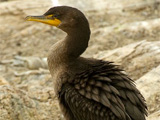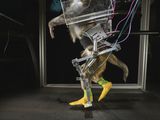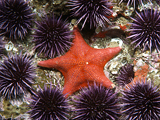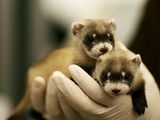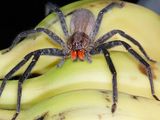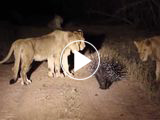Meet our
cities' real litterbugs: New research shows that
insects and spiders consume a big portion of the food tossed on the ground in
New York City—and likely other places.
By scattering a bug-friendly buffet of hot dogs, potato chips, and cookies in parks and road medians in the Big Apple,
scientists measured how much critters such as millipedes,
ants, and cockroaches nosh on the food we discard. The result: The skittering masses do a remarkably good job at cleaning up after us. (See "
Surprising Ant 'Mixing Bowl' Found in Manhattan.")
Let's put it this way: Along the Broadway/West Street corridor in New York City, bugs can consume 2,100 pounds (950 kilograms) of food waste each year—the equivalent of 60,000 hot dogs, the study revealed.
"If insects weren't eating all of this food, it would accumulate and be foul," said study leader
Elsa Youngsteadt, an entomologist at North Carolina State University in Raleigh.
Into the Concrete Jungle
Few scientists have studied how arthropods—a huge group of invertebrates that includes insects, spiders, crustaceans, and more—function in urban environments. But as cities grow, it's crucial to understand how animals fit into them, said Youngsteadt. (
See an urban map of the world.)
She knew from other studies that animals tend to perform the same roles in an ecosystem, regardless of whether that ecosystem is "wild" or urbanized. Since arthropods such as ants and millipedes forage for small bits of food, Youngsteadt wanted to know whether they could consume the food garbage in our cities.
For their research, Youngsteadt and colleagues focused on two major areas within Manhattan: urban parks and grassy medians. Since parts of Manhattan had been flooded by
Hurricane Sandy in 2012, which may have affected the biodiversity of the area, half of the sites she picked, in both parks and medians, had been flooded and half had not been flooded.
As Youngsteadt expected, the parks contained a greater number of arthropod and ant species than medians did, although she didn't see any differences between the areas that had been flooded and those that hadn't. (See "
Foodie Bees: Insects Head Downtown for Dinner.")
Once the scientists knew how many arthropod species lived in each area, they could measure how much the animals ate. At each site, the team put a tenth of a hot dog, a single potato chip, and a cookie in a small cage. The arthropods could reach the food in the cage, but other animals, like birds and rats, could not.
Free-for-All
Next, the researchers repeated the experiment with the same amount of food, only they left it out in the open. That way, the team could measure how much all the animals in the city environment consume our food waste.
The researchers found that arthropods consumed 32 percent of the caged food in 24 hours—much more than they expected. When the food was not put in a cage, animals—including arthropods—consumed 80 percent of it.
Some of the foods were more popular than others. "The arthropods definitely preferred the chips and cookies to the hot dogs," said Youngsteadt, whose study was published December 2 in
Global Change Biology.
She also found that arthropods were much more efficient at consuming people food in medians than in parks, although she's not sure why.
Six-Legged Garbage Service
"This is another in a series of elegant studies on urban ecology by this group of researchers at NCSU," said
Daniel Herms, an entomologist at Ohio State University in Wooster, who was not involved in this study.
"Insects are important in the natural environment, and this study is another example that they are providing critical services even in urban areas."
Although arthropods consumed only a few grams of food at each site, Youngsteadt's calculations show that these amounts can add up over time. In just one corridor along Broadway, arthropods could consume hundreds of thousands of cookies and chips.
The role insects play isn't trivial, either, Youngsteadt said—her research shows that insects keep our cities spick-and-span.
"Ants may disrupt our picnics and invade our kitchen, but you should probably like them better than rats."

